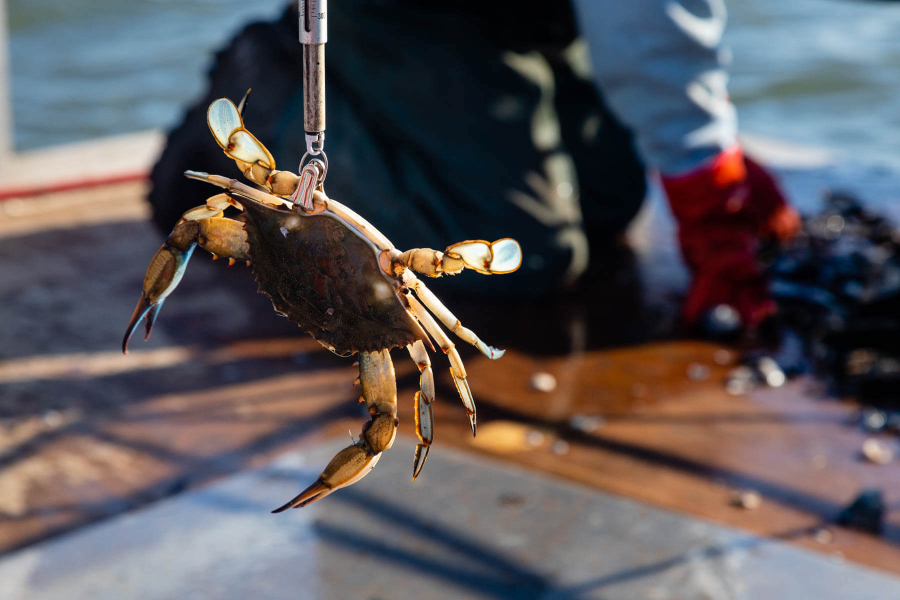Chesapeake Bay blue crab population remains healthy and sustainable, despite population decline
Management efforts continue to ensure protection and sustainability of Chesapeake Bay blue crabs

According to the 2020 Chesapeake Bay Blue Crab Advisory Report, the blue crab population in the Bay decreased from 594 million in 2019 to 405 million in 2020. While this marks an 31% decrease from the previous year, experts report the overall Chesapeake Bay blue crab population is not depleted or being overfished.
The juvenile blue crab population—crabs that will grow to harvestable size this fall—was estimated to be 185 million, down from 324 million in 2019. The overwintering mortality—the percentage of crabs that die between fall and spring often due to cold and/or freezing water temperatures—was 0.36%. This is the lowest overwintering mortality rate observed since 1996 and is below the long-term average of 4.53%. The low mortality rate was likely a result of a warm 2019-2020 winter.
To ensure continued resiliency of the population, experts focus on maintaining a robust stock of female crabs. Findings show that between 2019 and 2020, the total adult female blue crab population decreased 26% from 191 million to 141 million. This number is well above the 70 million threshold which is considered to be the minimum sustainable level for female blue crabs in the Bay, but lower than the target of 215 million. Because of natural variability in annual blue crab populations, blue crab abundance fluctuates from year to year. For example, the 2020 abundance estimate of 141 million is a decrease from 2019, but similar to the 2018 estimate of 147 million female blue crabs.
Experts also assess the sustainability of the blue crab population by comparing the percentage of the female blue crab population harvested each year to a 25.5% target and a 34% overfishing threshold. In the 2019 blue crab fishing season, 17% of all female crabs were harvested—safely below both the target (25.5%) and threshold (34%) levels for the twelfth consecutive year.
The Chesapeake Bay Stock Assessment Committee (CBSAC) develops the annual Blue Crab Advisory Report by evaluating both the winter dredge survey and harvest data to develop advice for fisheries managers. As part of the Chesapeake Bay Program, CBSAC—which includes representatives from state agencies, academic institutions and federal fisheries experts—works in collaboration with the Sustainable Fisheries Goal Implementation Team. “Our ever-improving knowledge of the science guiding blue crab management—coupled with conservative female management measures and accountability—continue to allow us to maintain a sustainable fishery, both ecologically and economically.” said Marty Gary, Executive Director of the Potomac River Fisheries Commission, in a media release.
An estimated 61 million pounds of blue crabs were commercially harvested from the Chesapeake Bay in 2019, which is below the 1990-2018 averages. Recreational crabbers harvested roughly 3.8 million pounds in 2019, similar to the 2018 harvest estimate of 3.4 million pounds. Combining the commercial and recreational harvest, approximately 64.7 million pounds of blue crabs were harvested from the Chesapeake Bay and its tributaries during the 2019 crabbing season.
CBSAC recommends that substantial changes in management are not necessary, and that Maryland, Virginia and the Potomac River Fisheries Commission put procedures in place to provide accurate accountability for all commercial and recreational harvests and explore new reporting technologies.
To learn more about our progress toward maintaining a sustainable blue crab population, visit www.ChesapeakeProgress.com.

Comments
There are no comments.
Thank you!
Your comment has been received. Before it can be published, the comment will be reviewed by our team to ensure it adheres with our rules of engagement.
Back to recent stories